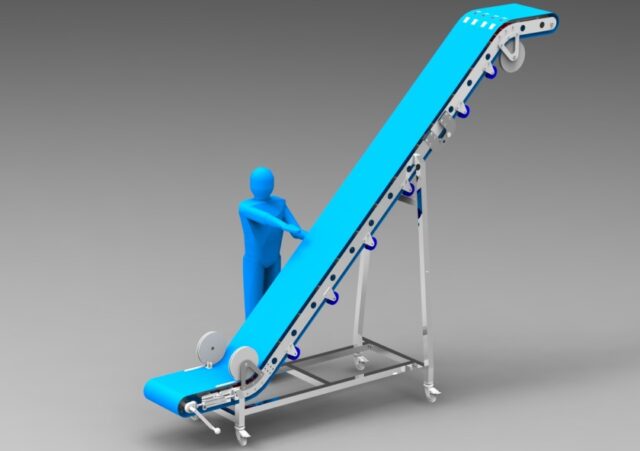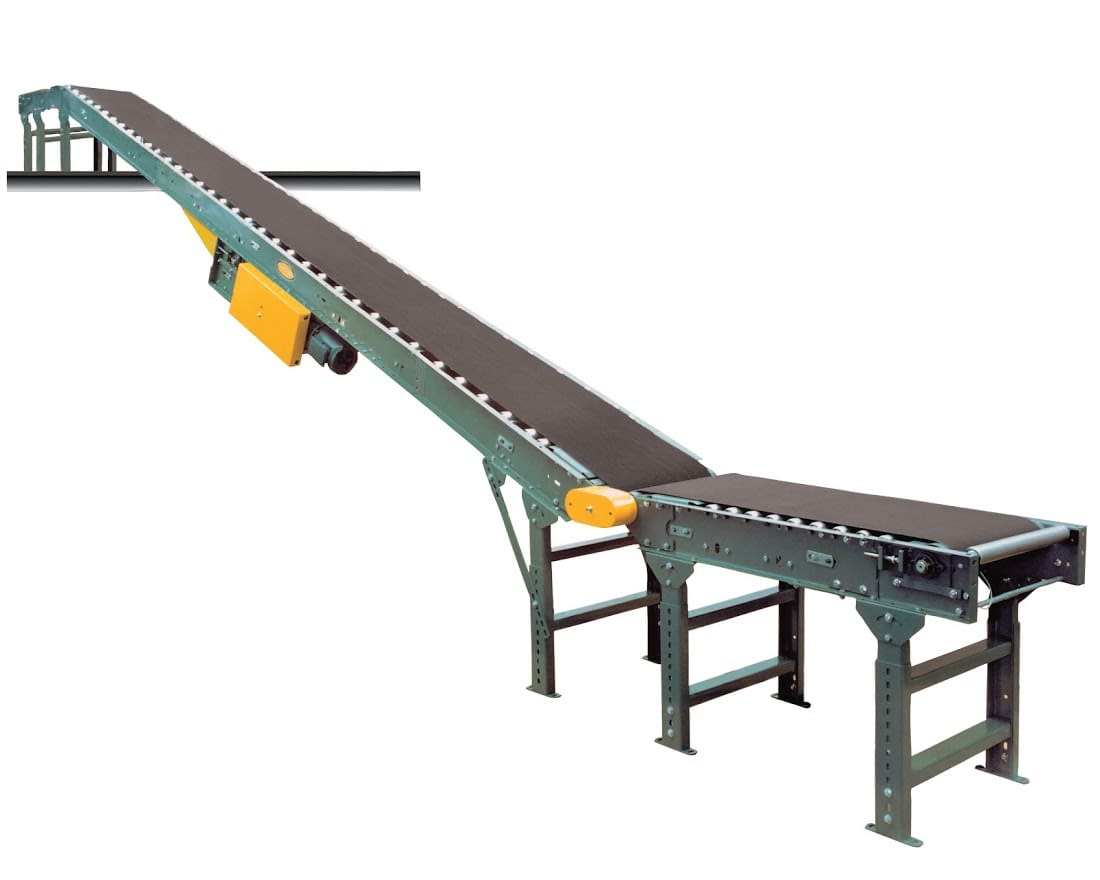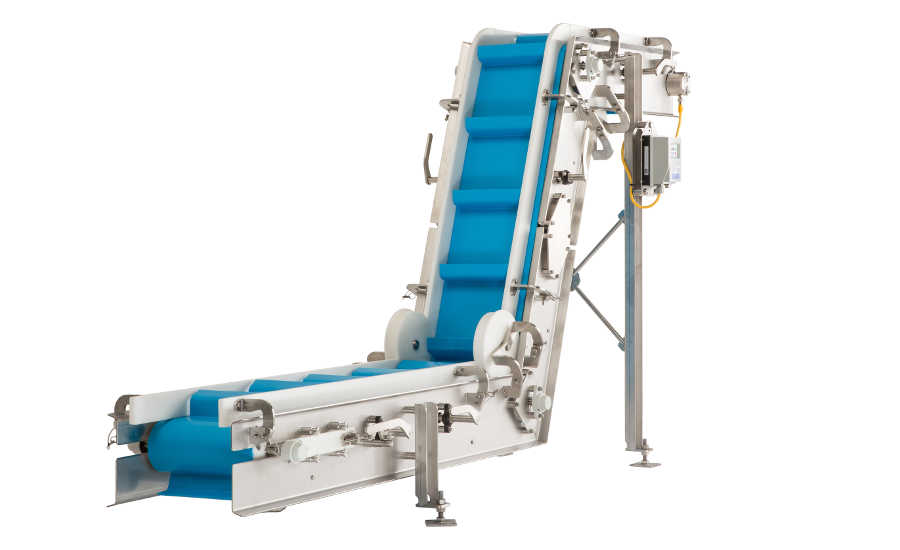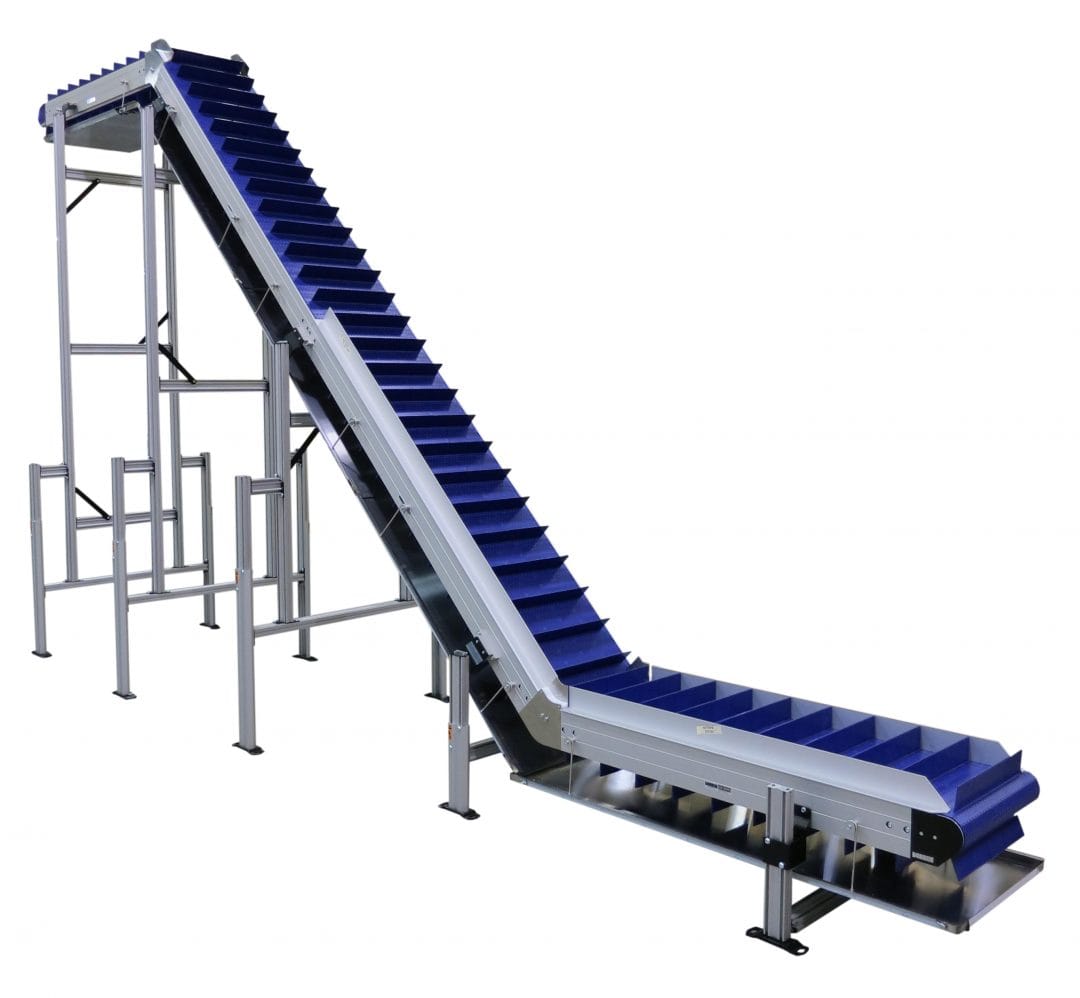
Efficiency is very important in any factory or industry setting. The golden rule for success is to get the most work done with the fewest means. A big part of getting this balance is inclined conveyors, which are also called inclined belt conveyors.
These specific conveyor systems are made to move things up and down or sideways. They are very useful in many fields, like gardening, food processing, warehousing, and food processing.
We go into great detail about incline conveyors in this in-depth guide. We cover their benefits, uses, design factors, and maintenance suggestions to help you make your processes more efficient.
Understanding Inclined Conveyors

Incline conveyors are flexible tools that can move things from one level to another, even when gravity is against them. In contrast to horizontal conveyors, which move goods on a flat surface, incline conveyors have belts or rollers that are tilted at an angle.
This lets them move quickly up and down slopes and steep rises. People often use these conveyors to load and unload trucks, move heavy items between floors of a building, and make production processes easier when there are changes in elevation.
Benefits of Incline Conveyors
Room Optimization
Incline conveyors allow for vertical transportation, which makes good use of room in buildings with limited floor space. Businesses can increase storage room and improve material flow without growing their footprint by using vertical space.
Better Productivity
These conveyors make it easier to move materials without any problems. This means less manual labor and less downtime for jobs like loading and unloading. Moving materials up and down an incline keeps the flow steady throughout the production process, which increases output generally.
Flexibility
Different materials, load sizes, and incline angles can be added to incline conveyors to make them work for different tasks. Because of this, businesses can change their conveyor systems to fit different production needs, which makes all of their processes more efficient.
Improved Safety
It is improved because these conveyors move materials automatically up and down slopes. This lowers the risks of lifting injuries and accidents at work that come with physical handling. Using incline elevators makes the workplace safer and lessens the chance that workers will get ergonomic strains.
Applications of Incline Conveyors

In the food preparation business, incline conveyors help move raw materials like grains, fruits, and vegetables up and down so they can be chopped up and packed. It’s important that workers be careful when working with fragile foods, and these tools keep the production line clean.
Inclined conveyors are very important in mining and quarrying for moving ores, rocks, and big things from lower levels to higher ones. These conveyors make it faster to move things in mines and quarries, whether they’re pulling things out of deep holes or up steep hills.
In logistics and distribution centers, incline conveyors move things from one rack to another and load and unload cars. This speeds up the process of fulfilling orders and makes the best use of warehouse room to store as much as possible.
In agriculture, incline conveyors make it easier to move gathered crops, seeds, and fertilizers from the field to places where they can be stored or processed. These conveyors make it easier for farmers to clean up and gather, which boosts their total output.
Design Considerations
There are a few things that need to be thought about when building an incline conveyor system to make sure it works well and is reliable:
Incline Angle: The angle of incline tells you how much weight the conveyor can carry and what kinds of things it can handle. Choosing the right slope angle is important to keep operations running smoothly and prevent material spills.
Material of the Belt and Cleat Design: The type of items being moved and the working conditions determine the belt material and cleat design. Abrasion-resistant belts and high-friction cleats are often used to keep things from slipping and to make sure they stay in place during slope transport.
Drive Configuration: Incline conveyors can have different types of drives, such as direct-drive motors, gears, and pulley systems. When choosing the drive system, things like the torque needed, the ability to control the speed, and how energy-efficient it is should be taken into account.
Safety Features: Adding safety features like emergency stop buttons, guardrails, and overload protection devices is important to lower the risk of accidents and make sure that safety rules are followed at work.
Maintenance Tips

Regular upkeep is important for incline conveyors to last as long as possible and work as well as possible:
Inspection and Cleaning: It is important to check the conveyor parts regularly for damage, wear, or building of debris so that problems can be found early and fixed. Regularly cleaning the conveyor belts and rollers will keep the materials from getting dirty and keep the machine running smoothly.
Lubrication: Bearings, pulleys, and drive systems need to be properly oiled to cut down on friction and make conveyor parts last longer. Follow the maintenance schedule and use the lubricants that the conveyor maker suggests.
Belt Tensioning: Make sure the belt is properly tensioned so it doesn’t slip and moves materials consistently. Check the tensioning devices on a regular basis and make any necessary adjustments to keep the belts in the best possible tension throughout the conveyor system.
Training and Education: Teach operators and repair staff how to properly run the conveyor, follow safety rules, and do routine maintenance. By giving employees the right information and skills, you can help avoid costly downtime and make sure that incline conveyors work well.
To sum up, if you want to be very good at moving things around efficiently, you need to think carefully about tools like incline conveyors. Businesses can get the most out of these flexible conveyor systems to boost productivity, make operations safer, and achieve operational excellence by learning about their benefits, uses, design factors, and upkeep needs.












